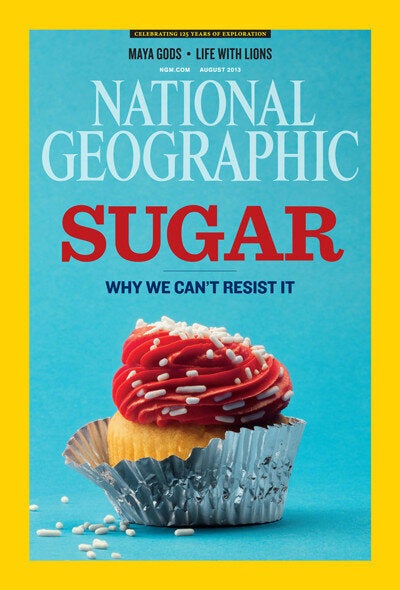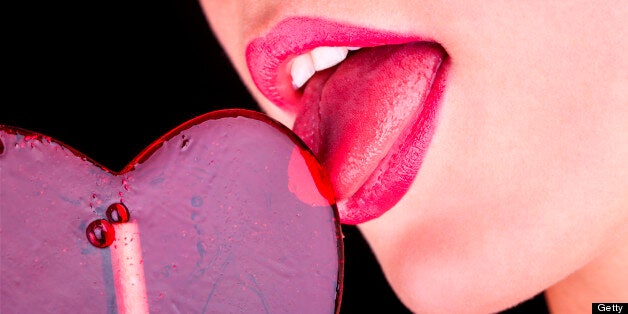
From childhood memories of penny sweets to office chocolate binging and coffee mornings laden with home-baked cakes, sugar is an inextricable part of our lives. But recent studies have shown that this addictive substance isn't actually made of all things nice and could be poisoning us. So why can't we stop eating it?
Rich Cohen has examined our love affair with sugar by examining America's relationship with the sweet stuff in "Sugar Love" in the August issue of National Geographic, from which the following excerpt and images are taken.

CANDY
"Candy is dandy, particularly to Americans, who spent $32 billion on sweets in 2011; per capita consumption was 25 pounds. Formerly a luxury item for the rich, candy became affordable with the decline of sugar prices and rise of mass production in the 19th century. The word itself comes from qandi: Arabic for a sugar confection." - Rich Cohen
Recently the American Heart Association added its voice to the warnings against too much added sugar in the diet. But its rationale is that sugar provides calories with no nutritional benefit. According to Johnson and his colleagues, this misses the point. Excessive sugar isn’t just empty calories; it’s toxic.
“It has nothing to do with its calories,” says endocrinologist Robert Lustig of the University of California, San Francisco. “Sugar is a poison by itself when consumed at high doses.”
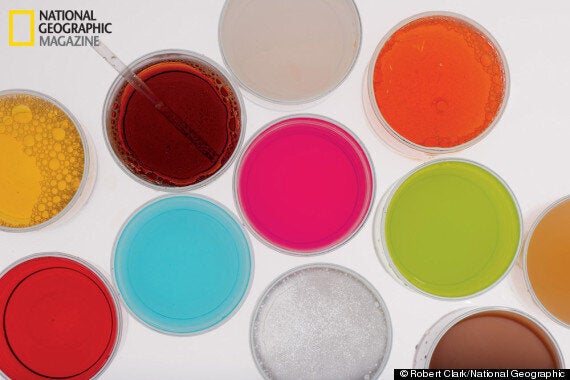
SODA
"Things go better with bubbles—or so it was thought by spa-goers, who often drank sparkling mineral water as part of the cure for what ailed them. The 18th-century discovery that carbon dioxide put the fizz in fizzy water led to systems for producing soda water, then to sweet drinks like root beer, ginger ale, and cola. Today’s 12-ounce soda typically contains around ten teaspoons of sugar." - Rich Cohen
We know that eating excess amounts of sugar is bad for us. The list of ailments associated with sugar intake is endless and we're taught from a young age that it rots the teeth, causes weight gain, lethargy, diabetes and heart problems, yet it's never stopped me from reaching for the toffee or polishing off a bag of fruit gums in record time.
Scientists have claimed that we're primed to crave sugar on an instinctive level as it is connected to our basic desire for survival, meaning that our sense of taste has evolved to desire the molecules necessary to live like salt, fat and sugar.
Even at a young age it seems that we are programmed to want sugar and, according to a study by Washington University, we have an innate, inbuilt preference for sweet flavours from the moment we are born and we learn to satisfy these craving throughout childhood, carrying our tastes into adulthood along with our sweet teeth.
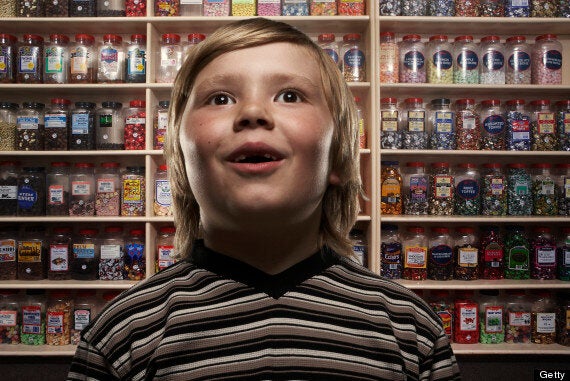
Charles Spence, professor of experimental psychology at the University of Oxford, told The Independent that we are used to it because we eat more and we eat more because we need more: "We experience it in increasing amounts and grow accustomed to it. Think of it like eating chillies – the more you eat, the more you need to eat to feel the level of heat."
It might not just be the abundance of sweets, fizzy drinks and chocolates that we ingest on a daily basis that's become an issue. According to recent findings, the sales of 'real' sugar - the bags of white sugar you find in supermarkets - has decreased while the sale of foods laden with 'hidden' sugar is on the rise.
Nowadays there's sugar in everything. From fructose in health foods to sugar in bread, processed foods and vitamin water and from low fat yoghurts to crisps, sauces and soups, the quantities of 'hidden' sugars in our daily foods is growing.
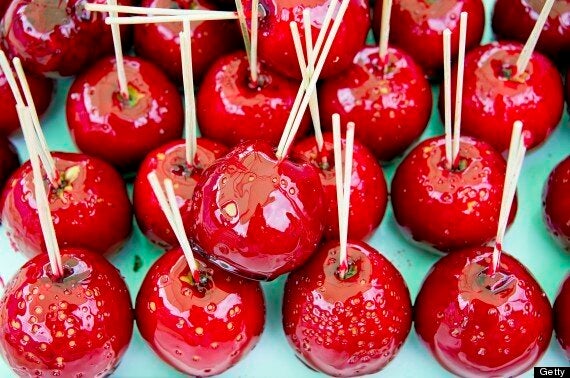
Felicity Lawrence, a food writer, conducted a study of fruit producing in 2007 and discovered that even fruit is getting sweeter as farmers are breeding more sugary varieties to keep up with demand for high-level sweetness that we've become accustomed to in our everyday diets.
How much should we be eating on a daily basis? According to the NHS, added sugars shouldn't make up more than 10% of the energy you get from food and drink each day. This is about 70g a day for men and 50g for women, although this can vary depending on your size, age and how much exercise you do. Fifty grams of sugar is equivalent to 12 teaspoons of sugar a day and each level teaspoon contains 16 calories.
So can we kick our sugar addiction? Probably not as it continues to be almost impossible to avoid on a daily basis. However, there are ways that you can significantly reduce your intake of the sweet stuff like these hand tips offered by NHS.uk which anyone can add to their daily routine.
- Instead of sugary fizzy drinks and juice drinks, go for water or unsweetened fruit juice (remember to dilute these for children to further reduce the sugar).
- If you like fizzy drinks, try diluting fruit juice with sparkling water.
- Swap cakes or biscuits for a currant bun, scone or some malt loaf with low-fat spread.
- If you take sugar in hot drinks or add sugar to your breakfast cereal, gradually reduce the amount until you can cut it out altogether.
- Rather than spreading jam, marmalade, syrup, treacle or honey on your toast, try a low-fat spread, sliced banana or low-fat cream cheese instead.
- Check nutrition labels to help you pick the foods with less added sugar, or go for the low-sugar version.
- Try halving the sugar you use in your recipes – it works for most things except jam, meringues and ice cream.
- Choose tins of fruit in juice rather than syrup.
- Choose wholegrain breakfast cereals, but not those coated with sugar or honey.
The full article from Rich Cohen and his images can be found in the August issue of National Geographic.
